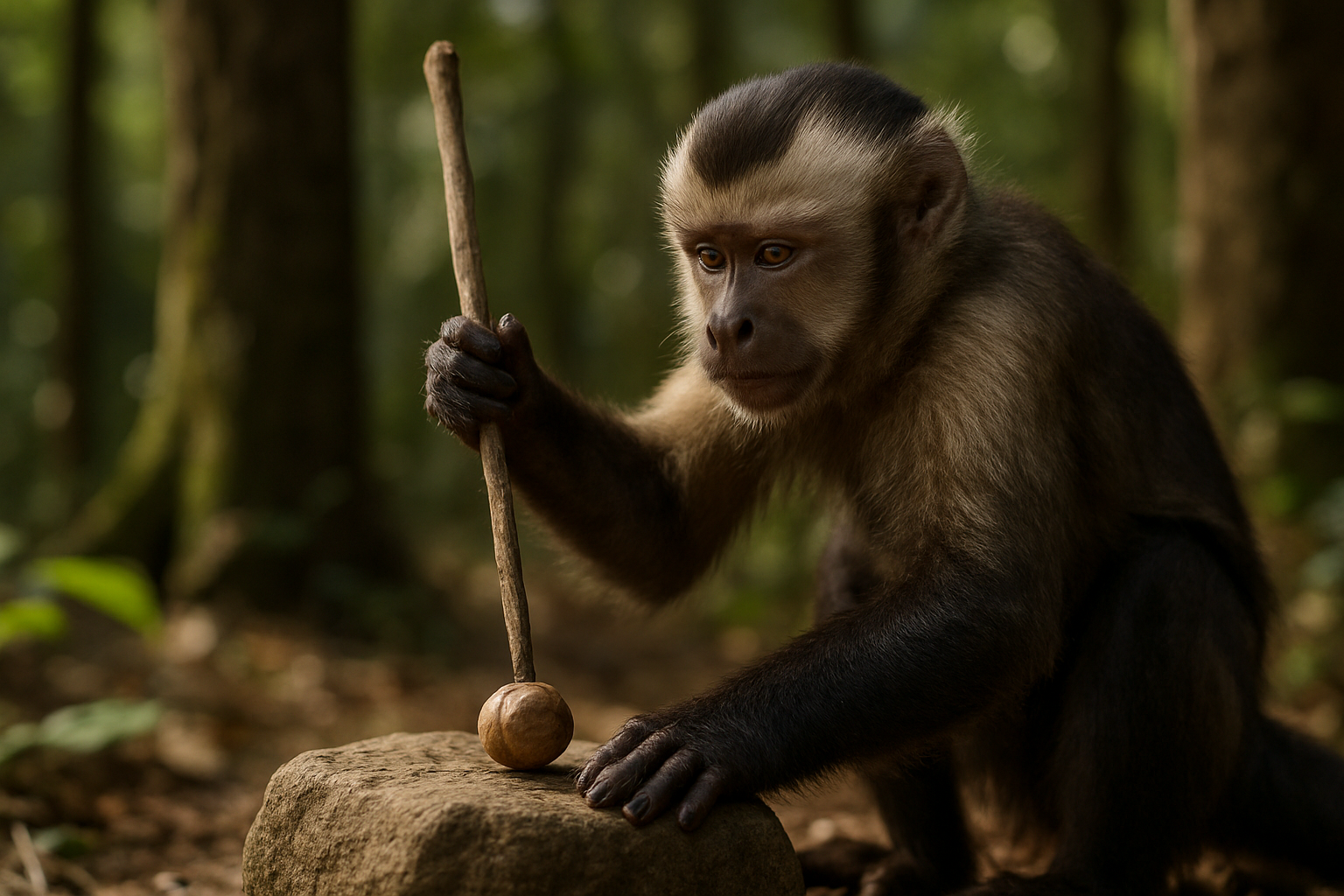Unraveling the Enigma of Capuchin Tool Use
In the lush rainforests of South America, a fascinating phenomenon has been captivating researchers and animal enthusiasts alike. Capuchin monkeys, known for their intelligence and dexterity, have been observed using tools in ways that challenge our understanding of animal cognition. This article delves into the intriguing world of capuchin tool use, exploring its implications for our understanding of primate intelligence and the evolution of tool use in the animal kingdom.

The Discovery of Capuchin Tool Use
The first documented observations of capuchin tool use in the wild came in the early 1990s, when researchers in Brazil’s Serra da Capivara National Park stumbled upon a group of bearded capuchins using stone hammers to crack open palm nuts. This groundbreaking discovery challenged the long-held belief that tool use among wild primates was limited to great apes and humans.
Since then, numerous studies have revealed the extent and complexity of capuchin tool use. These monkeys have been observed using a variety of tools for different purposes, including probing sticks to extract insects from tree bark, leaves as sponges to collect water, and even stone hammers and anvils to process hard foods.
The Cognitive Leap: Understanding Capuchin Intelligence
The ability to use tools requires a sophisticated level of cognitive processing. Capuchins must not only recognize the potential utility of an object as a tool but also understand the causal relationships between the tool, the target object, and the desired outcome. This level of abstract thinking was once thought to be unique to great apes and humans.
Research has shown that capuchins possess several cognitive abilities that enable their tool use. These include object permanence, means-end reasoning, and an understanding of spatial relationships. Moreover, capuchins demonstrate remarkable problem-solving skills, often improvising and adapting their tool use techniques to overcome challenges.
Cultural Transmission and Social Learning
One of the most intriguing aspects of capuchin tool use is its cultural nature. Different populations of capuchins have been observed using distinct tool sets and techniques, suggesting that these behaviors are learned and passed down through generations rather than being purely instinctive.
Studies have revealed that young capuchins learn tool use primarily through observation and imitation of their elders. This process of social learning allows for the accumulation and refinement of tool use techniques over time, leading to the development of unique tool-using traditions within different capuchin communities.
The Evolutionary Significance of Capuchin Tool Use
The discovery of complex tool use in capuchins has profound implications for our understanding of the evolution of intelligence and technology in primates. Capuchins are more distantly related to humans than great apes, suggesting that the cognitive foundations for tool use may have evolved earlier in primate evolution than previously thought.
This finding challenges the traditional view of tool use as a uniquely human trait and raises questions about the evolutionary pressures that drove the development of tool use in different primate lineages. It also highlights the potential for convergent evolution, where similar traits evolve independently in different species facing similar environmental challenges.
Conservation Implications and Future Research
As we continue to unravel the mysteries of capuchin tool use, it becomes increasingly clear that these primates possess a level of intelligence and cultural sophistication that demands our respect and protection. The habitats of many capuchin species are under threat from deforestation and human encroachment, putting these remarkable animals at risk.
Conservation efforts aimed at protecting capuchin habitats not only safeguard these intelligent primates but also preserve invaluable opportunities for further research into primate cognition and the evolution of tool use. Future studies may shed light on the neural mechanisms underlying tool use, the role of social dynamics in shaping tool-using traditions, and the potential for further innovation in capuchin technology.
Conclusion: A Window into Primate Intelligence
The study of capuchin tool use offers a fascinating glimpse into the cognitive capabilities of our primate relatives. As we continue to explore this field, we are likely to uncover even more surprising and insightful revelations about the nature of intelligence in the animal kingdom. The story of capuchin tool use serves as a powerful reminder of the complex and often unexpected ways in which intelligence manifests in the natural world, challenging our assumptions and expanding our understanding of what it means to be a thinking, problem-solving being.





